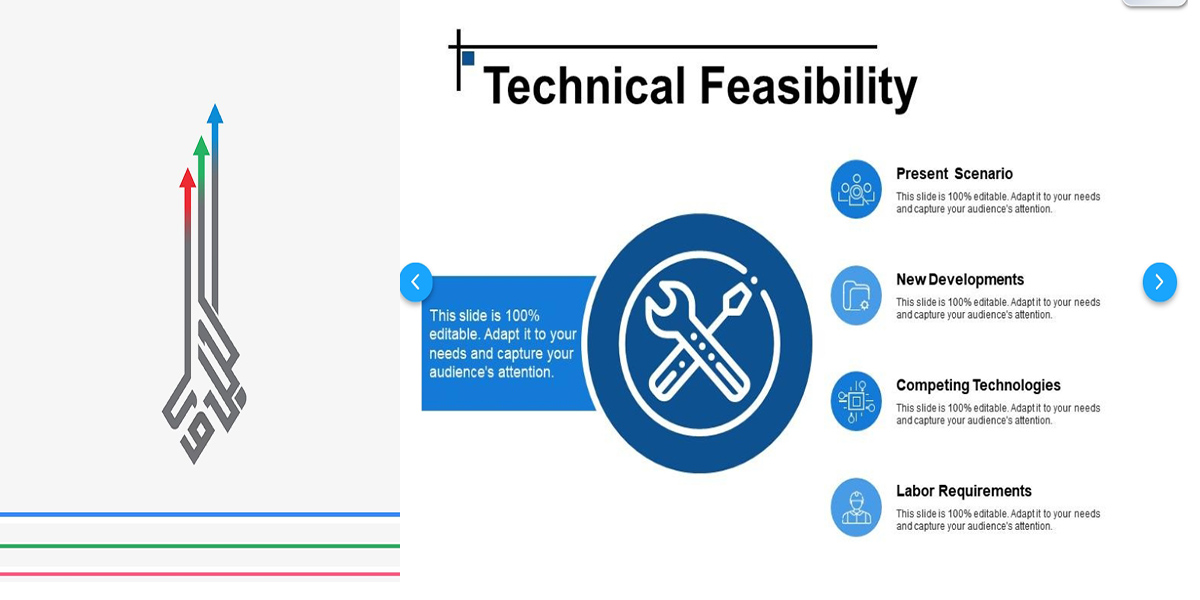Education
What is a Feasibility Study? Type Of Feasibility Study, Purpose of a Feasibility

What is a Feasibility Study?
A feasibility study is a comprehensive assessment of a proposed project that evaluates all elements essential to its achievement to evaluate its likelihood of achievement. Business achievement can be defined in most cases in terms of ROI, the amount of earnings the undertaking will generate.
It evaluates a challenge's or machine's practicality. It includes a goal and rational analysis of a potential business or project to determine its strengths and weaknesses, capacity possibilities and threats, sources required to carry it out, and remaining fulfillment prospects. When judging feasibility, two criteria must be considered: the required price and anticipated cost.
As the name implies, a feasibility evaluation is used to decide the viability of an idea, including ensuring a challenge is legally, technically possible, and economically justifiable. It tells us whether or not a challenge is worth the funding in a few instances, now not attainable. There may be many motives for this, consisting of requiring too many resources, which now not only prevents one's assets from performing different duties but additionally might cost more than an organization would earn again via taking on a venture that isn’t worthwhile.
A well-designed take a look must offer a historical past of the enterprise or challenge, which includes a description of the services or products, accounting statements, information on operations and control, advertising research and policies, monetary information, prison necessities, and tax duties. Generally, such research precedes technical improvement and project implementation.
Types of Feasibility Study:
Advertising (text continue below)
Feasibility studies may be categorized into five primary sorts: technical feasibility, financial feasibility, marketplace feasibility (additionally known as market match), operational feasibility, and criminal feasibility. A thorough feasibility take a look at typically evaluates all five regions.
1. Technical Feasibility:
This assessment specializes in the technical resources to be had to the employer. It lets in companies determine whether or not or now not the technical resources meet potential and whether or not or now not the technical crew can convert the mind into running structures. Technical feasibility additionally consists of the assessment of the hardware, software program, and other technical necessities of the proposed machine. As an exaggerated example, an business enterprise wouldn’t need to try to located Star Trek’s transporters in their constructing currently, this challenge isn't technically viable.
2. Economic Feasibility:
This evaluation typically includes a cost/ advantages assessment of the project, supporting corporations determine the viability, fee, and advantages related to a challenge earlier than financial resources are allocated. It moreover serves as an impartial challenge assessment and enhances venture credibility supporting choice makers determine the outstanding monetary blessings to the employer the proposed project will provide.
3. Legal Feasibility:
This evaluation investigates whether or not or now not any thing of the proposed projects conflicts with criminal requirements like zoning criminal pointers, facts protection acts or social media felony guidelines. Let’s say an agency desires to assemble a brand new workplace constructing in a selected region. A feasibility test would likely display screen the business enterprise’s best area isn’t zoned for that kind of employer. That company has without a doubt saved great time and effort by way of way of gaining knowledge of that their challenge have become now not feasible proper from the beginning.
4. Operational Feasibility:
This assessment includes task a examine to investigate and determine whether or not and the way properly the company’s desires can be met by way of manner of completing the mission. Operational feasibility studies additionally observe how a venture plan satisfies the requirements identified inside the necessities analysis phase of tool improvement.
5. Scheduling Feasibility:
This assessment is the most important for challenge achievement; a assignment will fail if now not completed on time. In scheduling feasibility, an organization estimates how a good deal time the challenge will take to complete.
How To Conduct Properly Technical Feasibility studies.
A feasibility study usually attempts to provide a document that can be used for project implementation. It is an attempt to analyze the technical and economic viability of a project. It, therefore, provides an investor with ideas on what is actually involved in the project by detailing the financial, technical, and management details of the project. For engineering projects, such information is very important since the costs can run into millions of Naira. Having the information on the project ensures that costly mistakes are not made and the project performances can be predicted before actual execution.
A feasibility report should be as comprehensive as possible. In fact, it should be done in such a way that some person other than the consultant can implement it in the report. A typical feasibility report should contain the following information: the project background, market outlook, raw materials, location, and site, equipment and civil works, management, financial evaluation, implementation schedule, social and environmental evaluation, and conclusions.
Project Background:
In this section of the study, the investor or promoter of the project should be properly named, with the address. This should state clearly whether the promoter is an individual or a corporate entity. It is also important to describe the basic orientation of the project. In other words, questions such as, "Is production going to be for finished products for the market or raw material for another industry?" should be asked. State whether the product is for domestic or for export consumption. State (if any) economic and industrial policies that support the project, e.g. National Economic Reconstruction Fund, Family Economic Advancement Programme. A brief history of the genesis of the project and similar projects in existence should be stated. Based on this, a case should be made for the need for this particular project to justify the investor's interest in it. Finally, clear objectives should be stated.
Market Analysis:
A market outlook survey must be carried out in the area where the proposed project is to be cited. Such a survey should produce information on market demand, sales volume of those already in the business or similar ones, possible competition, projected sales, etc. This information is very useful as it will determine the acceptability of the product to the end users.
Plant Capacity:
The proposed plant capacity should be specified with justification. This justification can be based on several factors, including an actual survey of market demand, the promoter's interest, and the availability of required equipment and raw materials. Plant capacity is usually given in the quantity of product handled per unit of time. A flour mill may be rated at 10 tonnes per day.
Raw Materials and Utilities:
Every project requires raw materials of different forms. The raw materials situation must be analyzed seriously with field data. How is the raw material to be obtained? Is it by direct production or purchase or by contract supplies? Information must be provided on the source and cost of the raw materials and general availability. In addition to raw materials, information on the availability of other inputs, such as factory supplies and utilities(electricity, water, roads, recreation, hospitals, and schools), is relevant to the project. The requirements of the project should be compared with what is available.
Technical Analysis:
Here the technical feasibility is presented. The layout and scope of the project should be described. The technology to be used should be described in detail. This should involve a description of the process involved in the production as well as the equipment and machinery required. The sources of these machines should be stated. Finally, the civil engineering works required should be specified, namely buildings, electricity, water, and roads.
Management Requirements:
In this section of the feasibility report, the general organization of the project is specified. This includes the organization of staff, type and category and distribution (Senior cadre, junior cadre, technical, etc.), the flow of command etc. This section will also take care of the scheduling of the project, production schedules, maintenance schedules, and general management of the establishment.
Financial and Economic Evaluation:
The general economic and financial analysis of the project must be carried out in detail using current economic indices and parameters. This would include investment costs and possible income. The investment costs include fixed capital and working capital. The fixed capital costs include those for civil engineering works, technology and equipment, pre-production capital costs, and costs of insurance, licenses, and depreciation. The working capital would include manufacturing costs at normal production capacity, administrative costs, sales and distribution costs, etc.
After compiling all the relevant costs and expected income, a financial evaluation should be carried out using relevant indices. These include Net Present Value, Internal Rate of Return, Pay-back period, Break-Even Analysis, and Sensitivity analysis.
The alternatives for financing the project must also based on available sources of funding. be specified.
Social, National, and Environmental Evaluation:
Any project that is of a serious dimension must be checked against the social, national, and environmental implications. This would involve a check on the social effects of the project on its host community, especially its contribution to the economy. The environmental dimension involves an evaluation of the proposed effluent system and the general effect of the project on different elements of the environment, e.g., soil, underground water, air, and streams, and human welfare. Technical and control information of the project. For engineering initiatives, such facts may be very essential since the expenses can run into hundreds of thousands of Naira. Having the data at the undertaking guarantees that pricey mistakes are not made and the undertaking performances may be anticipated earlier than real execution.
What is the Purpose of a Feasibility Study?
Feasibility has a observe is a crucial first step in starting a new project. It is a detailed exam of whether or now not or no longer a proposed industrial project is possible to acquire success. A feasibility check pursues to offer facts to assist business enterprise owners make knowledgeable decisions about their new challenge.
The feasibility studies will answer vital questions about the proposed agency, collectively with:
What is the purpose marketplace for this agency?
- Who are the competition?
- What are the fees related to starting and walking this enterprise?
- What are the potential dangers and rewards associated with this undertaking?
- How heaps revenue can this commercial enterprise generate?
- What are the anticipated earnings and losses for this project?
- What is the functionality for growth in this industry?
Importance of Feasibility Study:
A feasibility have a look at is important because of the fact it's far based totally on an organizational choice to “get it proper” earlier than committing assets, time, or budget. A feasibility study may discover new minds that could sincerely change an assignment’s scope. It’s nice to make the ones determinations in advance in the area of jumping in and learning that the assignment received paintings. Conducting a feasibility test is constantly useful to the assignment because it gives you and distinctive stakeholders a clear photo of the proposed venture.
Below are a few key blessings of project feasibility observe:
- Improves project businesses’ cognizance
- Identifies new opportunities.
- Provides treasured facts for a “bypass/no-cross” selection.
- Narrows the employer options.
- Identifies a legitimate reason to adopt the assignment.
- Enhances the success rate by evaluating a couple of parameters.
- Aids selection-making at the project
- Identifies motives now not to continue
Benefits of a Feasibility Study:
Preparing a project feasibility study is an important step that might help project managers make knowledgeable decisions about whether or not or now not to spend time and money at the company. Feasibility studies may additionally assist an agency in avoiding taking over a problematic industrial organization by offering essential information.
An additional advantage of doing a feasibility study is that it aids in developing new ventures via supplying data on elements inclusive of the way an agency will work, what difficulties it can face, who its competition is, and what kind of and where it will get its funding from. These advertising and marketing techniques are the purpose of feasibility studies, which try to steer financiers and banks on whether or not putting cash properly into a certain business enterprise venture makes the experience.
What Is Included in a Feasibility Study Report?
One of the most important steps in starting an enterprise is accomplishing a feasibility observation. This remark will assist in determining if your enterprise idea is viable and can gain fulfillment. Several factors was to be considered even as sporting out feasibility look, which includes the marketability of your service or product, the competition, the monetary balance of your enterprise, and more. A feasibility examination ought to cover the quantity of era, assets required, and ROI.
The effects of your feasibility research remark are summarized in a feasibility report, which typically contains the following sections.
Advertising (text continue below)
- Executive precis
- Specifications of the object or provider
- Considerations for the future of the era
- The marketplace for goods and offerings
- Approach to Advertising
- Organization/staffing
- Schedule
- The monetary forecasts.
- Recommendations are primarily based on studies.
- Tools for Conducting a Feasibility Study.
- Suggested Best Practices.
- While every project has its desires and wishes, the subsequent are first-rate practices for engaging in a feasibility commentary.
- Do a preliminary assessment. This consists of having remarks from relevant stakeholders on the new venture and seeking out different commercial organization situations.
- To ensure the records are strong, decide and ask queries approximately in the initial section.
- Take a survey to understand the marketplace calls for and opportunities for the contemporary concept or industrial employer.
- Create an organizational, operational, or marketing strategy. This includes figuring out how masses hard work is needed, what costs, and the way lengthy.
- Make a projected income announcement that entails revenue, running expenses, and income.
- Create a gap day stability sheet.
- You will need to pick out and cope with any vulnerabilities or obstacles.
- Take an initial desire to go in advance with the plan.
did you read these yet?

Ademola Lookman wins 2024 African footballer of the year
Football: 3 months, 4 weeks

The Richest Businessman in Nigeria Aliko Dangote Reduced the Price of Primun Moto Spirit (PMS) know as ...
Homeland: 3 months, 4 weeks

Finland New work visa policies is To Attract International Professionals This 2025.
Foreign Countries: 3 months, 1 week
the most reade
- British-Nigerian professional boxer Anthony Oluwafemi Olaseni Joshua OBE popularly ....
- Six Good Food The Kidney Need To BE Heathy During …
- United Kingdom has included Israel among Forty-seven other countries to …
- Best Four Phone To Use this 2025 and its Specifications.
- Ghanain president have done the marvelous by opening up visa-free …
- Israel Defence Force says It opened fire on Syria protest …
- Nigerians Presidents Bola Ahmed Tinubu Couldn't Continue his Trip to …
- Iran manufacturing its own version of Boeing, Airbus engine parts:
- The Richest Businessman in Nigeria Aliko Dangote Reduced the Price …
- Ademola Lookman wins 2024 African footballer of the year
Comments (0)